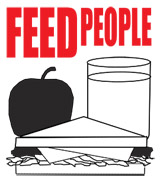Print, Email or Share with the Share Button at the bottom of the page.
Notes by Summer D Clemenson
Facilitated by:
- Kathy Wahto, Executive Director of Serenity House
- Greg Winter, Director at Whatcom Homeless Service Center, Opportunity Council
Reasons For Housing First
- People not being served
- Shelters had revolving doors
- Veterans not served
What is Housing First
A program to shorten homelessness by not depending on shelters and transitional housing.
Housing First as a priority grew out of the communities’ commitment to serve ALL homeless subpopulations, especially those who we had not served well before:
single, chronically homeless persons, and people re-entering from residential institutions.
Another primary attraction to Housing First was the awareness that overuse, over-reliance on emergency shelter and transitional housing was unnecessarily costly and was interfering with the effort to end and reduce homelessness.
Permanent Supportive Housing for chronically homeless adults and families was the most transformative of all strategies.
The impact of costly ineffective programs that managed homelessness too often screened out the most needy.
Benefits of Housing First
- With an address people can get mail
- People tend to deal with mental and medical issues before they are emergencies
- People tend to use drugs/alcohol less – many quit
- People tend to make and keep more necessary appointments
The History of Housing-First
In its earliest meaning, it is a practice of helping chronically homeless individuals access their own permanent housing without preconditions of sobriety or services engagement. A harm reduction approach that recognizes that some people can’t access or maintain services while they live on the street.
Later the philosophy was expanded to serve other homeless populations. In these cases, the housing assistant may only be temporary, but the rapid movement into permanent housing is still the goal.
Family-focused Housing First strategies have been around since the mid 1990’s, but it was very recent that HUD and other funders realized that some families with minor children experience frequent episodes of homelessness due to diagnosed disabling conditions. The goal of serving chronically homeless families:
- Stabilize the household
- Improves outcomes for children by employing a harm-reduction model, protected lease situations
- Avoid breaking up families
Housing First is an alternative to emergency shelter/transitional housing which tends to prolong the length of time that families remain homeless. In permanent housing families can begin to regain the self-confidence and control over their lives.
Transitional Housing is still necessary when permanent housing is not available yet.
A family household survey of homeless families in Housing First and transitional programs, found that when families were asked what service could have prevented their housing crisis, over 80% of households wrote in employment and job training services.
Housing First saves Emergency Room costs, shrinks the need for Emergency Shelters
-THE MONEY SPENT ON THESE PROGRAMS COULD BE SPENT ON MORE HOUSING
People prefer to work for permanent, stable housing and will work harder Housing First than in strict programs that create barriers.
Without proper case management and supportive services Housing First could only save money by not wasting it. Other programs do not always deal with the personal needs of families and individuals.
Who needs to be at the table to begin Housing First
- Public Housing Authorities
- Special needs housing inventory
- Community based housing inventory
- Behavioral health
- Home health
- Treatment providers
- Domestic Violence/Sexual Assault Agencies
- Law & Justices, EMS, DSHS
- WorkSource, School Districts
- Veterans Services
- Faith based organizations
- Regional Partnerships
Housing First is held accountable by HMIS (Homeless Management Information Systems).
Working with Clients
- Outreach to help maintain housing
- Services must be voluntary
- Crisis management plan in place
- Housing retention plan in place
- Harm reduction plan in place
- Intermediary – landlord & tenants
